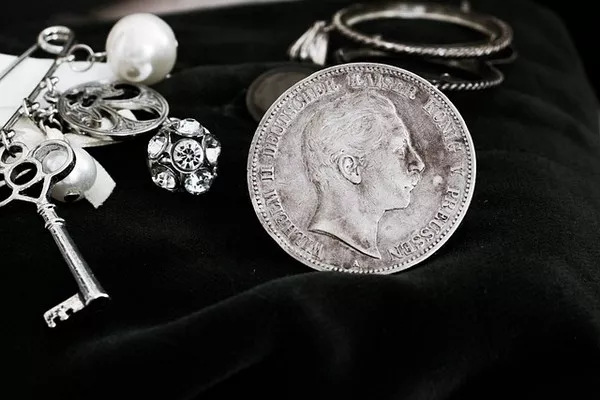Silver, a precious metal known for its lustrous appearance and diverse applications, has been a valuable asset for centuries. Investors, collectors, and enthusiasts often find themselves delving into the intricate details of silver measurements. One common question that arises is: How many grams are there in one ounce of silver? In this article, we will explore the conversion between ounces and grams, delve into the historical significance of silver, and discuss its role in modern economics.
The Basics of Silver Measurement
Before delving into the specific conversion of ounces to grams, it’s essential to understand the basic units of measurement for silver. In the world of precious metals, weight is typically measured in troy ounces. A troy ounce is distinct from the avoirdupois ounce commonly used for everyday items, such as food and household goods.
One troy ounce is equivalent to approximately 31.1035 grams. This slight deviation from the avoirdupois ounce is a key distinction when dealing with precious metals like silver, gold, and platinum. The troy ounce is the standard unit of measurement in the precious metals industry, ensuring consistency and accuracy in transactions and valuations.
How Many Grams in 1 Ounce of Silver?
Now, let’s focus on the specific conversion: how many grams are in one ounce of silver? As mentioned earlier, one troy ounce is approximately 31.1035 grams. This conversion factor is crucial for anyone involved in buying or selling silver, as well as for those interested in understanding the weight of their silver possessions.
To calculate the number of grams in a specific amount of silver, you can use the formula:
Grams = Ounces × 31.1035
For example, if you have 5 troy ounces of silver, the calculation would be:
Grams = 5 ounces × 31.1035 grams/ounce
Grams = 155.5175 grams
Understanding this conversion is fundamental for anyone engaged in the silver market, whether they are investors, collectors, or industry professionals.
Historical Significance of Silver
Silver’s role as a precious metal dates back thousands of years, with a rich history intertwined with human civilization. From ancient civilizations to the modern era, silver has been used for currency, trade, and as a symbol of wealth. The Greeks, Romans, and other ancient cultures recognized the value of silver and incorporated it into their monetary systems.
In the 19th century, the United States adopted the silver standard, linking the value of its currency to a specific amount of silver. However, as economies evolved, many countries transitioned to the gold standard or fiat currencies backed by the government’s creditworthiness. Despite these changes, silver has maintained its allure and importance in various industries, including jewelry, electronics, and photography.
Modern Uses of Silver
In contemporary society, silver continues to play a crucial role in various industries. Its unique properties, such as conductivity, reflectivity, and antibacterial qualities, make it indispensable in many applications.
Electronics: Silver is a vital component in the electronics industry, used in the manufacturing of conductive pastes, switches, and connectors. Its exceptional conductivity makes it an ideal material for ensuring efficient electrical conductivity.
Photography: Silver’s light sensitivity has been exploited in traditional photography. While digital photography has become predominant, silver compounds are still used in specialized applications and historical photographic processes.
Jewelry and Silverware: The aesthetic appeal of silver has made it a popular choice for jewelry and silverware. Its lustrous finish and malleability allow artisans to create intricate designs and durable products.
Medical Applications: Silver’s antimicrobial properties make it valuable in the medical field. Silver nanoparticles are used in wound dressings, catheters, and other medical devices to prevent infections.
Investment: Silver remains a sought-after investment, providing a hedge against inflation and economic uncertainty. Many investors diversify their portfolios by including physical silver or silver-backed financial instruments.
See Also How to Tell if It’s Real Silver? A Comprehensive Guide
Conclusion
Understanding the relationship between ounces and grams is essential for anyone involved in the world of silver, whether as an investor, collector, or industry professional. One troy ounce of silver is equivalent to approximately 31.1035 grams, and this conversion factor is critical for accurate transactions and valuations.
As we appreciate the historical significance of silver, from its use as currency in ancient civilizations to its modern applications in technology and healthcare, it becomes evident that silver is a versatile and enduring precious metal. Its unique properties continue to make it a valuable asset in various industries, and its role as a store of value remains relevant in today’s ever-changing economic landscape. Whether you are considering silver for its investment potential or admiring its beauty in jewelry, understanding the weight measurements is a fundamental step towards navigating the fascinating world of silver.


